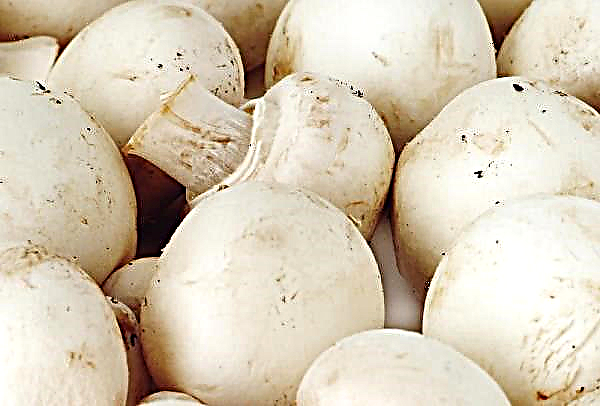Wooden paths in a summer cottage are not only beautiful, but also functional. Many landscape designers recommend using this exterior element in order to divide the territory into zones, to create connecting paths between different buildings and structures. There are many variations of such tracks. Each owner can install this element of landscape design, adjusting it to the ready-made style of his site.
Advantages and disadvantages of wooden walkways
Like various parts of the exterior, such paths have their pros and cons.
- The list of the main advantages of wooden paths includes:
- Environmental friendliness. Such material will not only organically fit into almost any style of the garden plot, but also does not have any toxic effects on the environment. Wood is a natural pure product, therefore, it does not cause any harm to humans or the environment.
- Availability. Such garden paths do not require huge financial costs both during creation and during their repair. Many owners find wood saw cuts in yards that have already become salvage, which is very profitable. The installation of the tracks is quite simple, so the installation can be done with your own hands and without the help of specialists, and this is quite economical.
- Originality. Wooden paths are distinguished by their unique style. Each owner can lay out the track in his own way, using his own pattern, cuts of various types of trees, unusual decorative elements. All this as a whole will create an original design.
- Easy to install and operate. Laying a wooden walkway is much easier, for example, than a pavement path. It does not require the implementation of complex installation technologies, and also does not need to buy expensive materials and tools. The restoration of such paths is simple, it can be done independently without calling the masters.

- The list of flaws is much smaller. It consists of two points:
- Fragility. Wood is an organic product that can deteriorate due to various mechanical and natural factors. Even if you use special means to protect this material, you should not be sure that this will help to preserve the product for decades.
- Feature of application. Wooden paths cannot be called a universal design element. They will fit perfectly into country plots, designed in the style of "country" or "casual", and when the territory is framed in a modernist style, you should think about the appropriateness of their use.
Types of Wooden Walkways
There are many options for paths from the material in question.
Modern designers recommend that owners of private houses use paths in their yards based on:
- wood cuts;
- boards;
- wooden beam;
- garden parquet;
- tree bark or sawdust (mulch).
Each of these types has an almost identical creation technology, only the external characteristics and some styling details will differ.
Made of wood cuts
Such tracks are very popular today, as the material is available and easy to install. It is not necessary to buy a tree cut, it can be obtained after cleaning the territories as a result of the work of utilities and in many other situations. The appearance of this type of paths is very similar to paving stones. The main difference is that wood saw cuts are characterized by distinctive patterns and sizes, which creates an original design.
Laying the type of track in question can be done in different ways: alternating large and small forms, laying out in the form of various ornaments and patterns, shapes, creating "islands" of wooden elements. The specifics of creating this version of the path is that saw cuts must be partially dug into the ground.
From wooden boards
This option is considered temporary. This is due to the fact that the boards do not always have an aesthetic appearance, and also, with constant use, parts can quickly collapse. Most often, the considered paths are used in the first years after the construction of the cottage and in the initial stages of the design of the exterior of the site. The path from the boards is a cheap, simple and functional option, so many people prefer to install them.
Wood can be ordered or materials available after construction. Processing of boards is usually carried out using an electric planer or machine. Installation of such a path is possible both on the surface of the earth, and on a long log of timber. The second option is more durable.
Important! It is recommended to make sand under the masonry. Also, boards should be treated with special protective agents for wood.
From a wooden bar
This option is very similar to a boardwalk, but the difference is only in the characteristics of the material. The bar is considered more expensive and durable. Many owners prefer it, rather than boards, because of stability, reliability and durability. You can lay the beam in a continuous and intermediate way. Establish the considered type of path directly to the ground without using masonry, but for this it is necessary to level the soil surface.
From the garden floor
This type of track is widely used today.. For the creation of ready-made boards from boards or composite material. Decking is the most popular option, which is produced in the form of tiled modules or garden parquet. Such a coating is made from ordinary larch, pine or wood-polymer composite. To prevent the garden parquet from bending, it is recommended to lay it on a previously prepared hard surface.
From the bark of trees and sawdust (mulch)
Due to the fact that this material is short-lived and cakes quickly enough, it is necessary to pour organic product from time to time. Easy installation is a plus on this path, as you only need to remove the topsoil. When arranging such temporary tracks, it is imperative to install borders to reduce the likelihood of mulch spattering.
The disadvantage of this type of country sidewalk is that because of the high probability of decay of wood waste, the contents of the trench must be replaced every 1-2 years. It is also necessary to take into account the fact that the particles will adhere to the shoes and spread throughout the area. In the territory with sandy soil, you can pour mulch directly onto the ground without the use of material for waterproofing.
Selection and preparation of material for cut tracks
The first step in creating a country wooden sidewalk is the correct selection and processing of wood. Saws can be taken from any type of tree. The best options are oak, larch and beech.
Did you know? Experts say: larch cuts can last a quarter of a century or more with proper material handling at the initial stage of laying the track.
Often owners choose wood from coniferous species, mistakenly believing that, thanks to resins, saw cuts will last longer. In fact, the pine “rounds” are more friable and decay much earlier than solid deciduous species.
Wood processing is carried out according to the following rules:
- The standard height of the rings is 15–20 cm. If the thickness is less than 10 cm, then most likely the saw cuts will not hold well in the ground, and may also crack under load.
- Each wooden element must be cleaned of bark. It rots quickly enough, despite the use of protective equipment.
- The bottom saw cut is recommended to be processed with bitumen.
- Using copper sulfate, you not only protect the wood, but also get a noble dark shade.
- Crack saws must be disposed of.
- It is possible to apply completely dried material after processing.

Necessary tools
To create paths, in addition to wooden saw cuts, it is necessary to prepare some materials and equipment.
The list of obligatory things include:
- Pegs and rope for marking.
- Waterproofing: rolled or non-woven geotextile.
- Pebbles, gravel, sand and water for the foundation.
- Shovel, buckets and brushes for trench preparation.
- Stones or bars for sides.
- Level.
- Hammer or mallet.
- Chainsaw.
 The amount of material depends on the size and depth of the trench, as well as the characteristics of the path itself.
The amount of material depends on the size and depth of the trench, as well as the characteristics of the path itself.Marking the place and drawing
This step involves thinking through the style of the track and its layout, after which all this should be transferred to the drawing. The design should indicate the line configuration and path parameters.
The prepared plan can be safely transferred to the site. Some adjustments can be made here, as the location is usually slightly different from the owner’s plan. Mark the area with stakes and a rope stretched between them. It is very important to determine the location of the main track and additional winding narrow paths.Important! The average width of the track is 60–80 cm from the calculation that for one person about 35 cm will be enough.
Construction stages
After the preparatory steps have been taken to create a country wooden sidewalk, you can begin the main work.
Construction consists of the following stages:
- trench preparation;
- preparation of the base, waterproofing and borders (if necessary);
- laying down saw cuts.

Each step requires attention. In case of an error, the owner will have to spend money on additional materials to fix the problem. If all the steps are performed according to the recommendations, then the wooden path will serve for many years.
Trench
This recess for fixing the path is necessary for a long service life and safety when moving. The depth of the trench depends on the height of the saw itself. At the same time, you can add an additional 50-100 mm, taking into account the type of soil and the load on the sidewalk. The width is identical to the parameters of the planned track.
About 15–20 cm of fertile soil is typically removed, and the path is formed at a slight slope to divert precipitation. From the side where there is a greater degree of slope, you can install a drainage system.
Base preparation and waterproofing
The bottom of the ditch must be waterproofed. For these purposes, geomaterial or a special plastic film is suitable.Gravel or crushed stone (mixed with sand) is added to the waterproofing coating, which helps protect the wood from moisture. This layer should be 25-50 mm. Drainage must be carefully rammed. Sand and gravel should be leveled with a level.
At this stage, you can also build the sides, which are made of stone, bars and other materials. Next, you need to make another layer of sand, so that the height of the pillow is up to 100 mm. To seal, you can pour water.
Did you know? Arkhangelsk is characterized by the largest number of restored and created wooden sidewalks in Russia. City authorities call this element of landscape design a highlight for attracting tourists.
Stacking
The process of laying out wooden circles does not have any specific rule. The installation of elements depends on the preferences of the owner of the courtyard himself, the conceived pattern. Today you can find options for paths, where saw cuts are very tightly grouped. It is also permissible to stir each element at a distance from the neighboring one, creating straight lines or zigzag. The main requirement is to deepen the hemp and align all the cuts at approximately the same level.
Dressing
You can decorate the wood with colored paint to create a mood. The dark shade of hemp covered with a 20% solution of copper sulfate or varnish looks noble. The ground cover crops and plain pebbles look very nice between the cuts. Some owners use lawn grass in rolls as the basis for wide gaps in the track.
To fill the space, you can buy multi-colored gravel. At the edges of the curbs, various grassy and flowering plants are planted, decorated with stones, small figures and miniature lanterns.
Care for wooden paths
During operation, garden sidewalks crack, rot and lose their attractiveness over time. In order to bring the appearance of the track back to normal in time, it is necessary to carefully inspect it annually. When creating paths, it is recommended to preserve the main and decorative material, which will be needed for repairs in the future.
Mandatory procedures include:
- Cleaning trails from debris and dirt.
- Treatment of hemp with antiseptic agents.
- Replacing damaged elements with new ones.

Thus, wooden paths are aimed at creating the convenience of moving around the garden area, as well as at maintaining a neat appearance of the territory. To create such an element of landscape design is not difficult and it does not require large financial costs. If you make a garden sidewalk from saw cuts, following the step-by-step instructions, and also perform all the necessary care steps, then such a functional part of the exterior will please the owner for many years.












